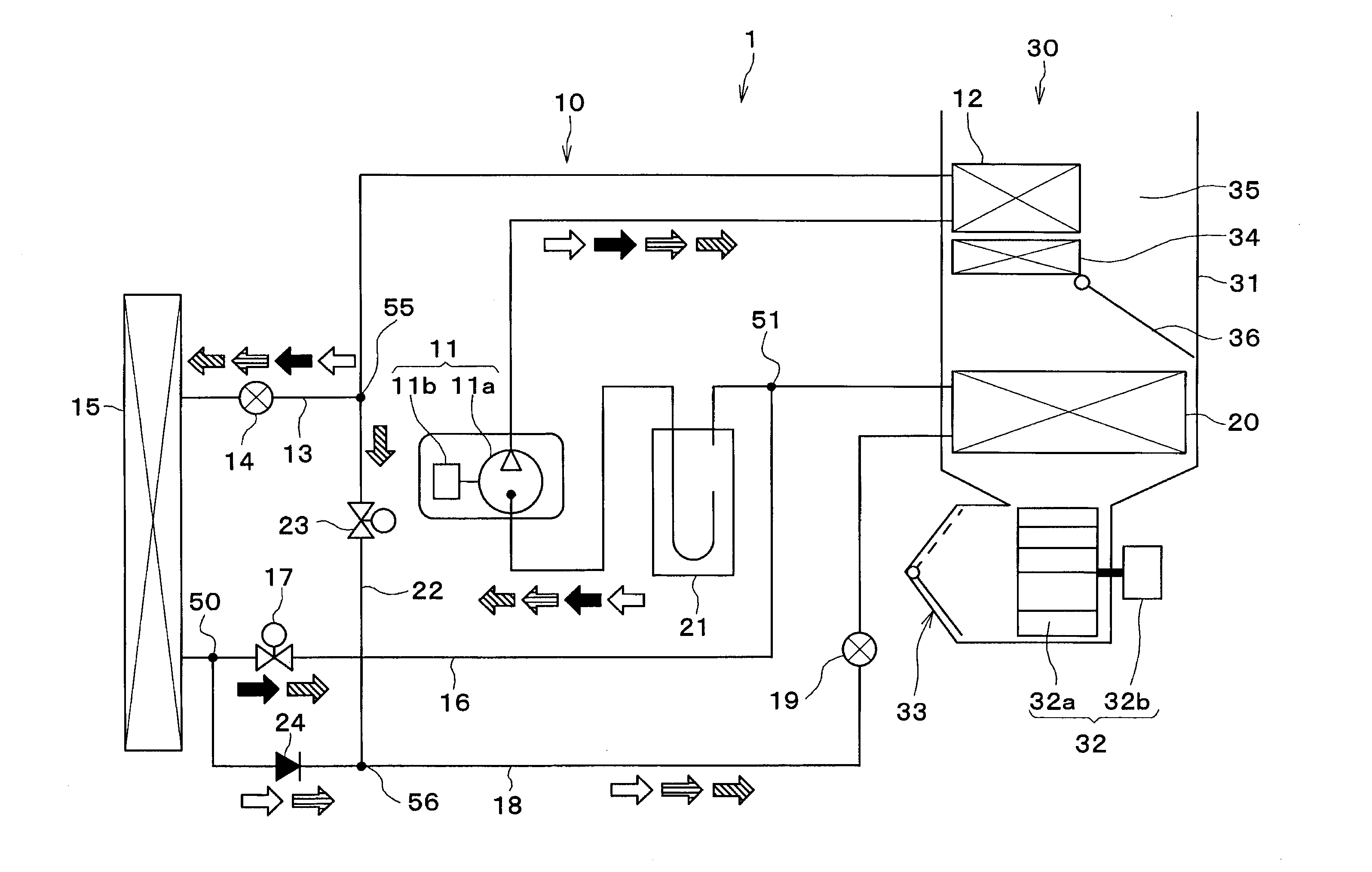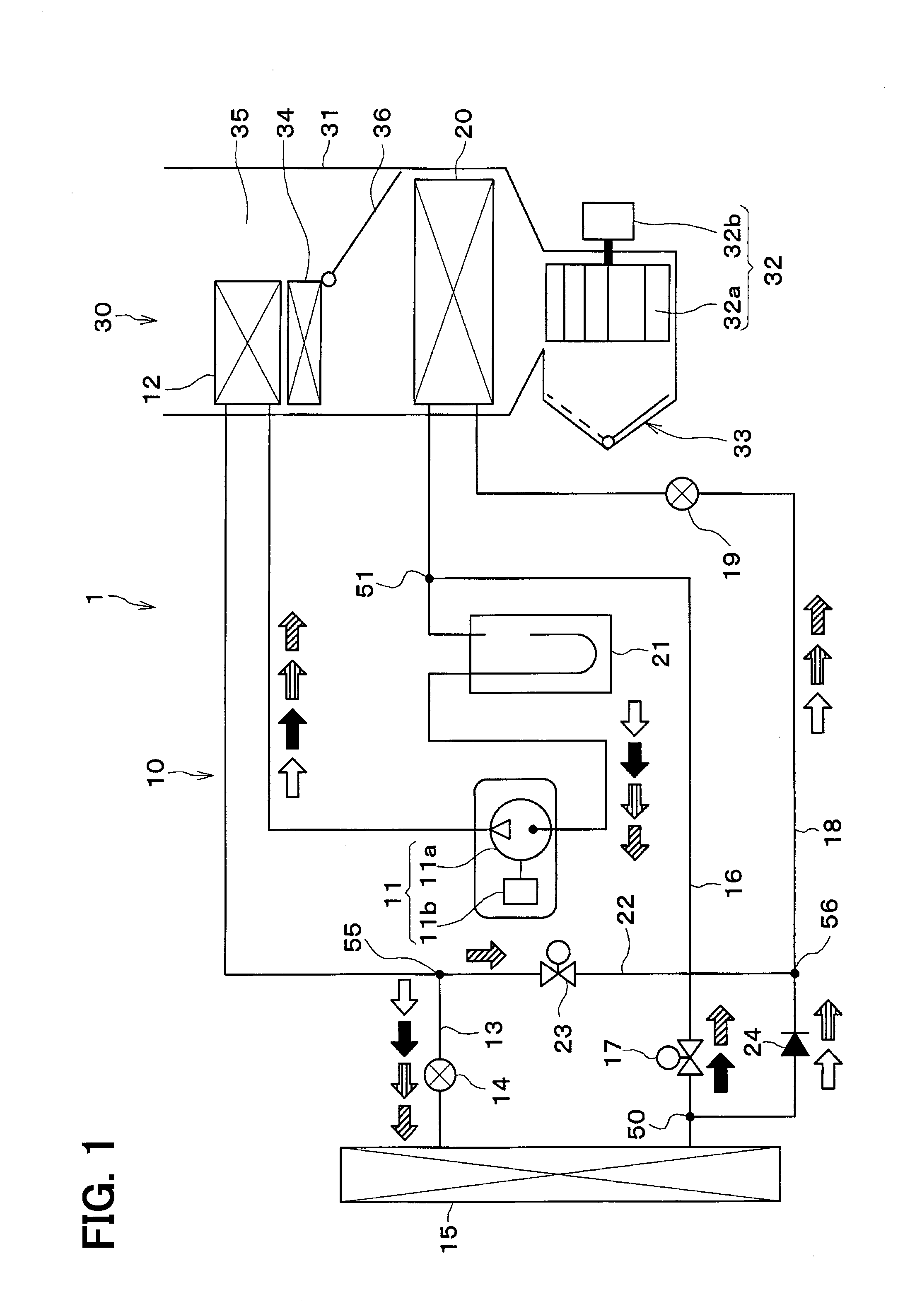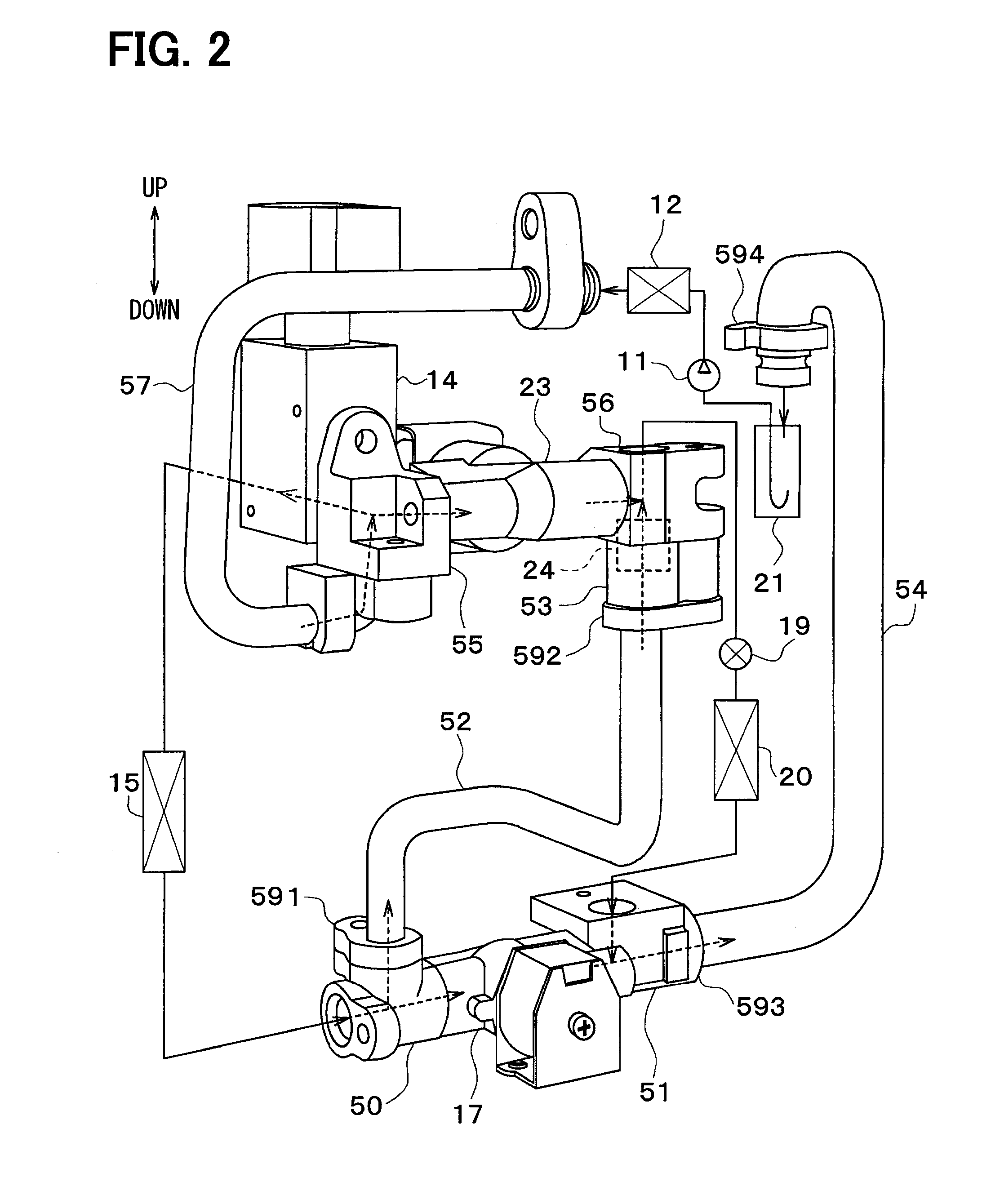Refrigeration cycle device
a technology of refrigerating cycle and refrigeration components, which is applied in the direction of refrigeration components, transportation and packaging, light and heating equipment, etc., can solve the problems of increasing the occupied space of the vehicle, increasing the cost due to the increase in the risk of lowering so as to reduce the number of components, improve the cooling performance and heating performance, and reduce the occupied space
- Summary
- Abstract
- Description
- Claims
- Application Information
AI Technical Summary
Benefits of technology
Problems solved by technology
Method used
Image
Examples
first embodiment
[0048]A first embodiment will be described with reference to FIG. 1 to FIG. 8. FIG.
[0049]1 is a schematic configuration drawing illustrating a vehicle air conditioning apparatus 1 of the present embodiment.
[0050]In the present embodiment, a refrigeration cycle device 10 is applied to the vehicle air conditioning apparatus 1 for a hybrid vehicle that obtains a drive force for the traveling of a vehicle from an internal combustion engine (an engine) and a traveling electric motor. The refrigeration cycle device 10 of the vehicle air conditioning apparatus 1 functions to cool or heat air to be blown into the vehicle interior that is a space to be air-conditioned.
[0051]Therefore, the refrigeration cycle device 10 is configured to be capable of switching the refrigerant flow channel among a refrigerant flow channel in a cooling mode (cooling operation) for cooling the vehicle interior, a refrigerant flow channel in a dehumidification heating mode (dehumidification operation) for heating ...
second embodiment
[0142]In the first embodiment described above, the refrigerant flow channel toward the first expansion valve 14 and the refrigerant flow channel toward the second opening-and-closing valve 23 extend in the horizontal direction in the second inlet side connector 55. In a second embodiment, however, as illustrated in FIG. 8, in the second inlet side connector 55, a first refrigerant flow channel 55a leading from the refrigerant inlet port to the refrigerant outlet port connected to the first expansion valve 14 extends to an upper side in the direction of the gravitational force from a lower side in the direction of the gravitational force, and a second refrigerant flow channel 55b branching from the first refrigerant flow channel 55a to the refrigerant outlet port connected the second opening-and-closing valve 23 extends in the horizontal direction.
[0143]In this configuration, in the case where the refrigerant flow rate is a low flow rate, the liquid-phase refrigerant branching to the...
third embodiment
[0144]In the first embodiment, the first inlet side connector 50 and the first opening-and-closing valve 17 are fastened with the bolt, and the first inlet side connector 50 and the fastening plate 591 are fastened with another bolt. In a third embodiment, however, as illustrated in FIG. 9, the first inlet side connector 50, the first opening-and-closing valve 17, the fastening plate 591 are fastened with a single bolt 61. Accordingly, the number of components may be reduced, and the number of assembling steps may be reduced.
PUM
 Login to View More
Login to View More Abstract
Description
Claims
Application Information
 Login to View More
Login to View More - R&D
- Intellectual Property
- Life Sciences
- Materials
- Tech Scout
- Unparalleled Data Quality
- Higher Quality Content
- 60% Fewer Hallucinations
Browse by: Latest US Patents, China's latest patents, Technical Efficacy Thesaurus, Application Domain, Technology Topic, Popular Technical Reports.
© 2025 PatSnap. All rights reserved.Legal|Privacy policy|Modern Slavery Act Transparency Statement|Sitemap|About US| Contact US: help@patsnap.com



